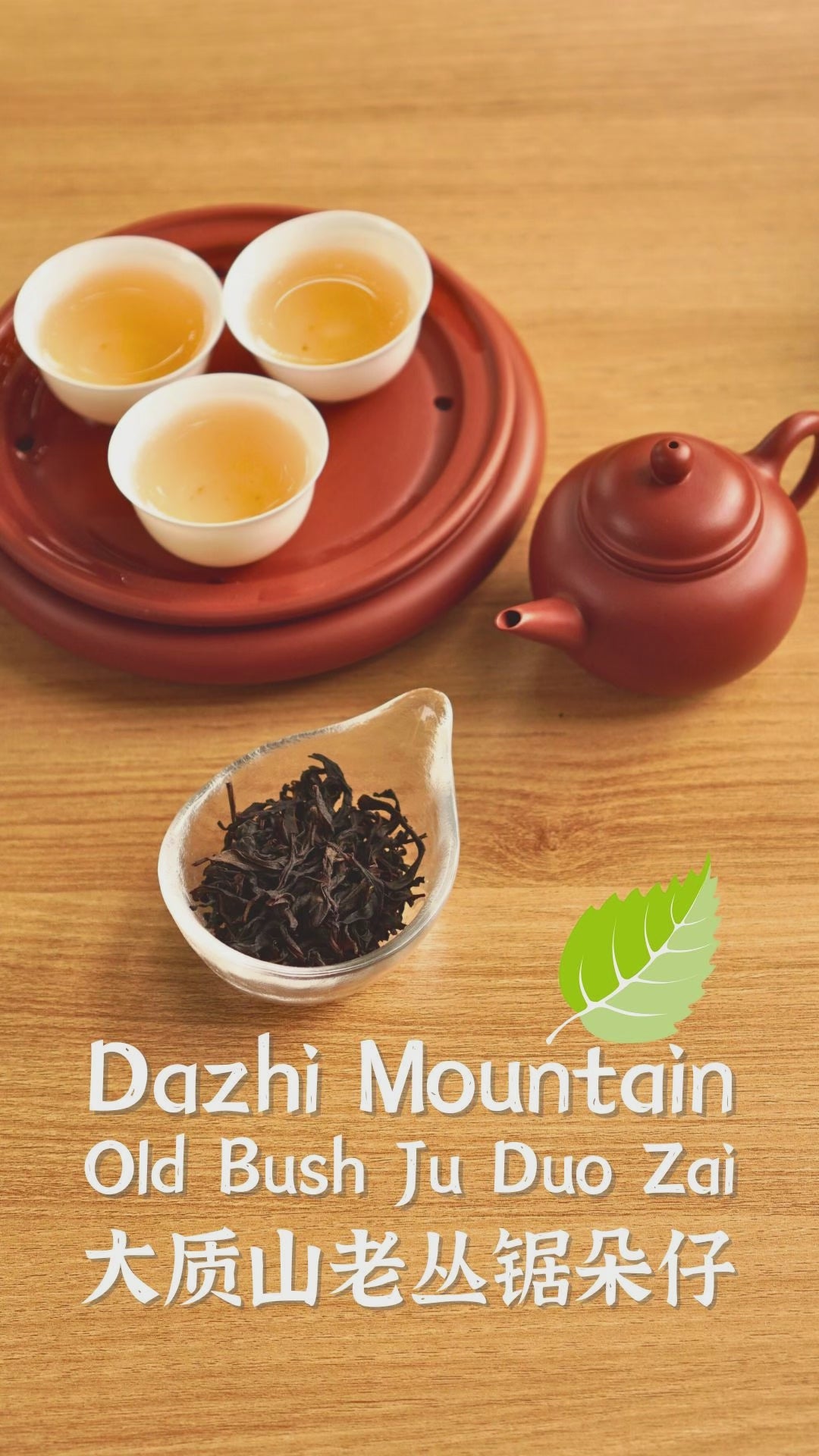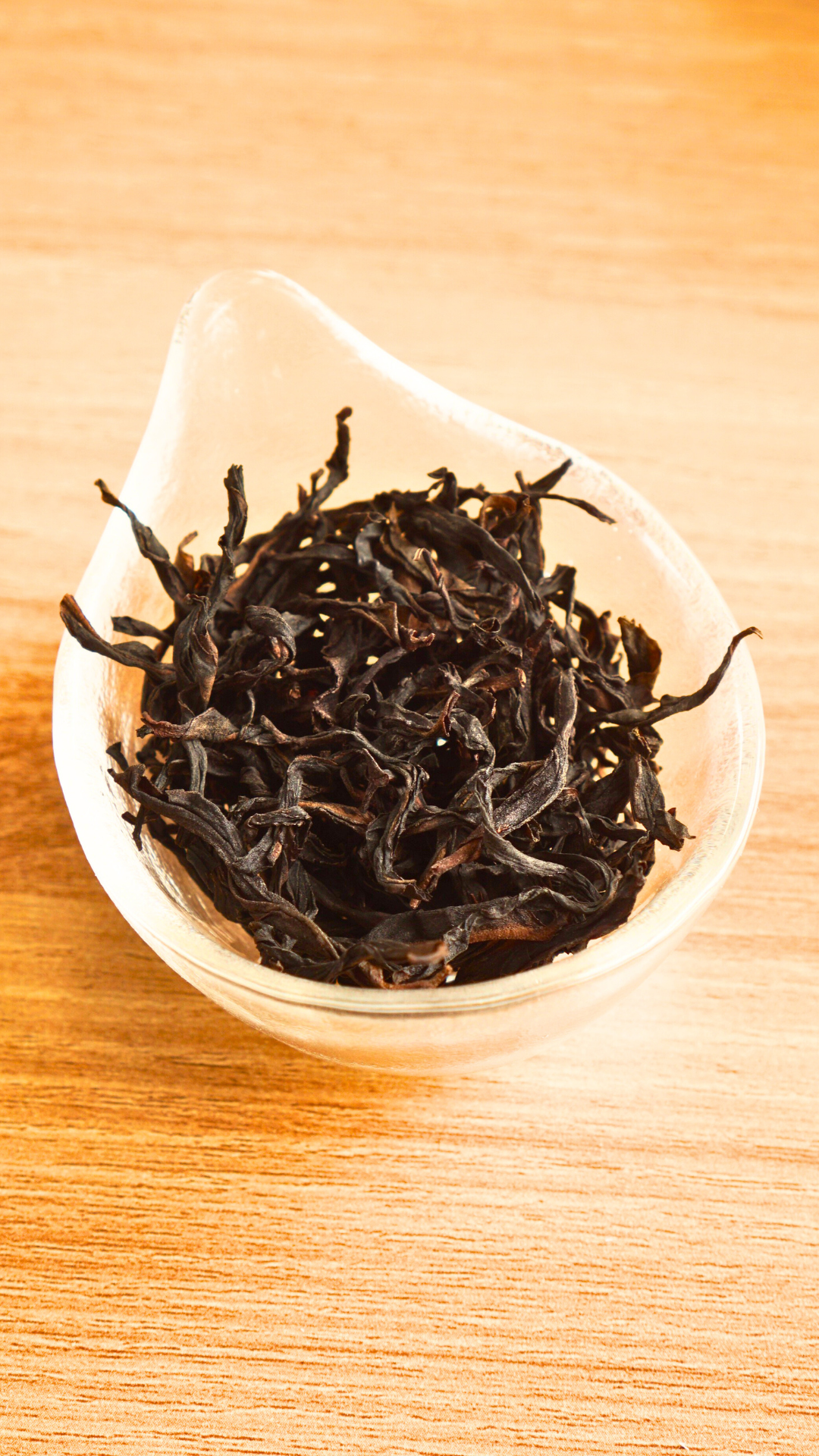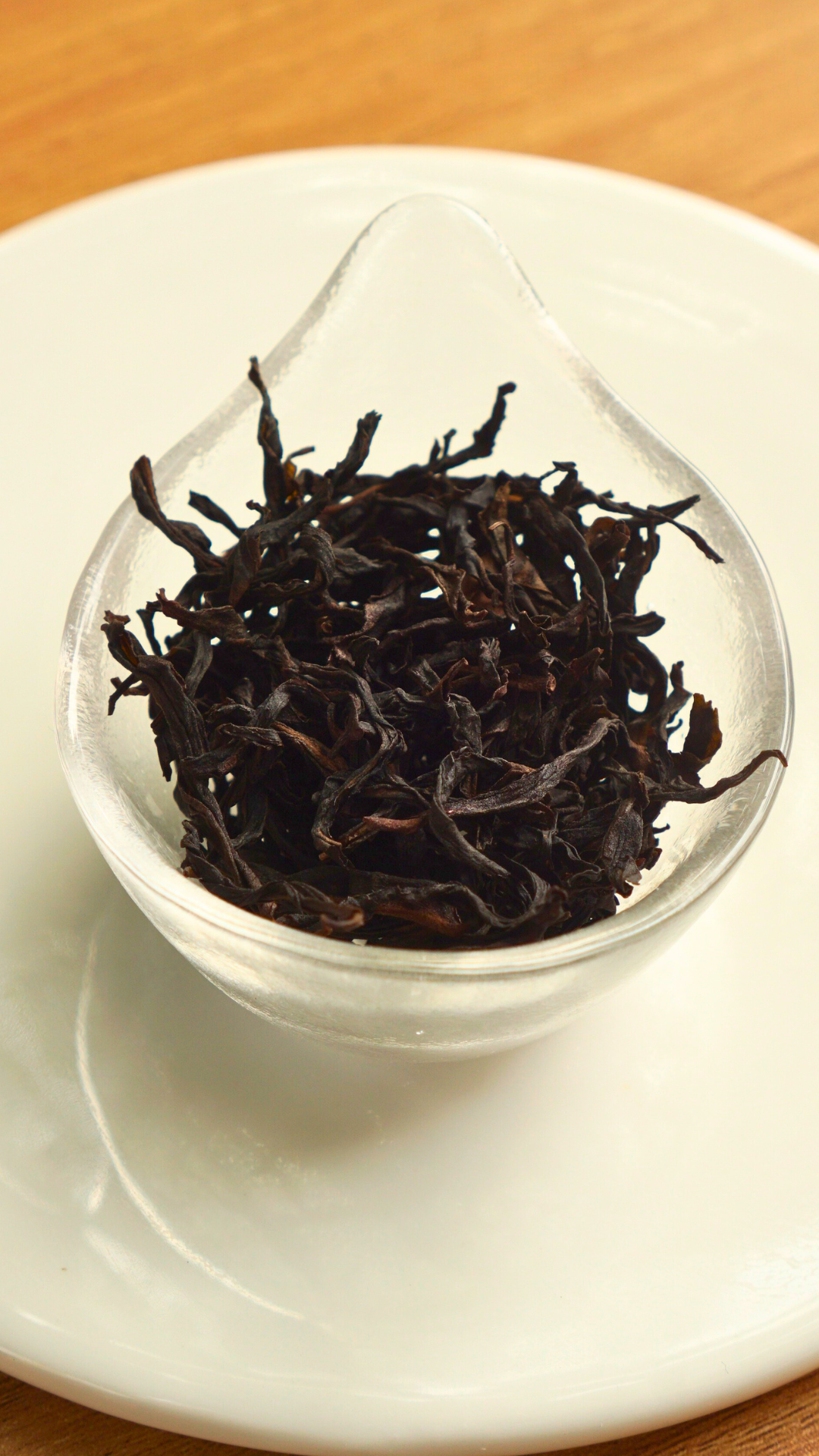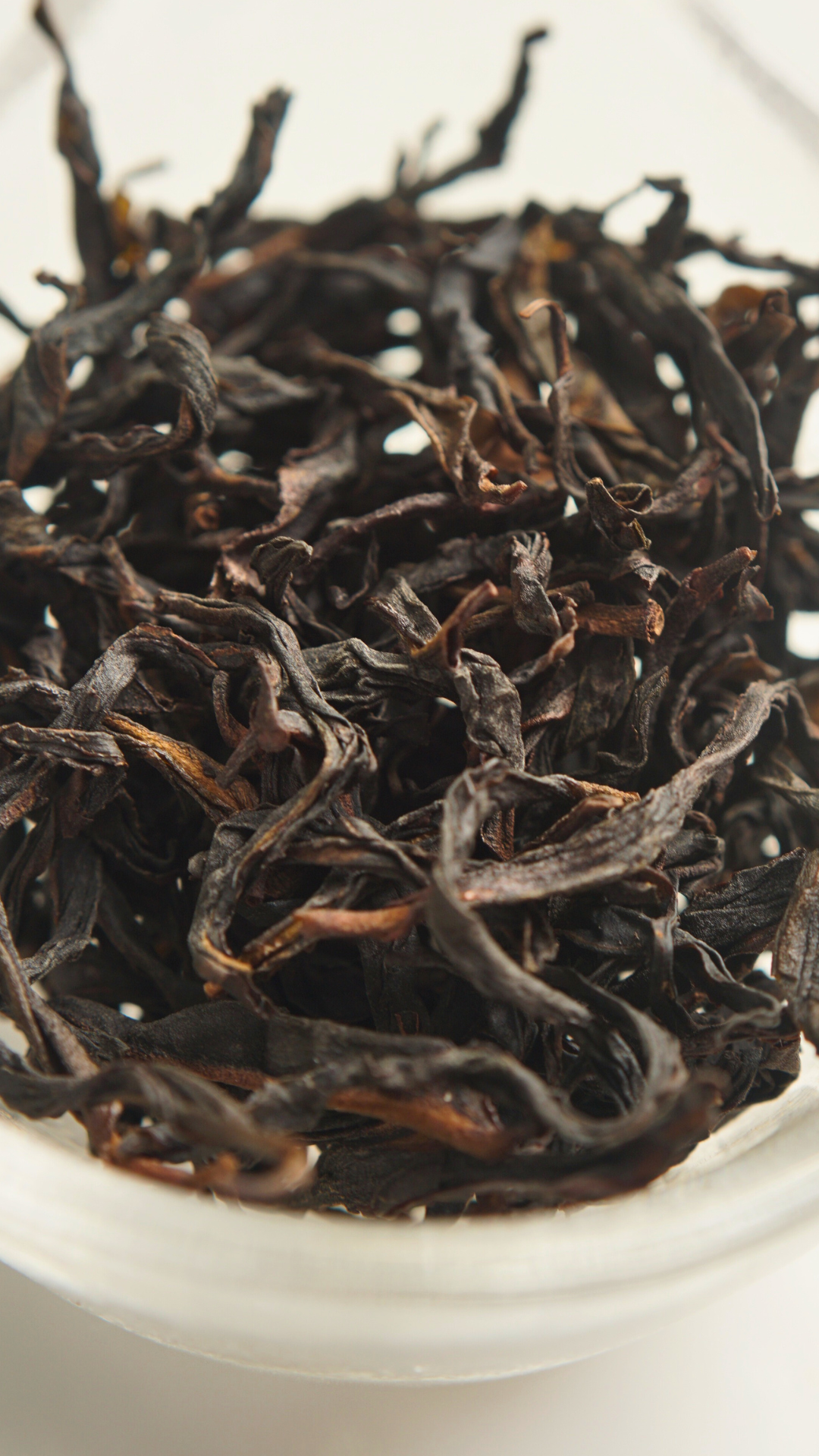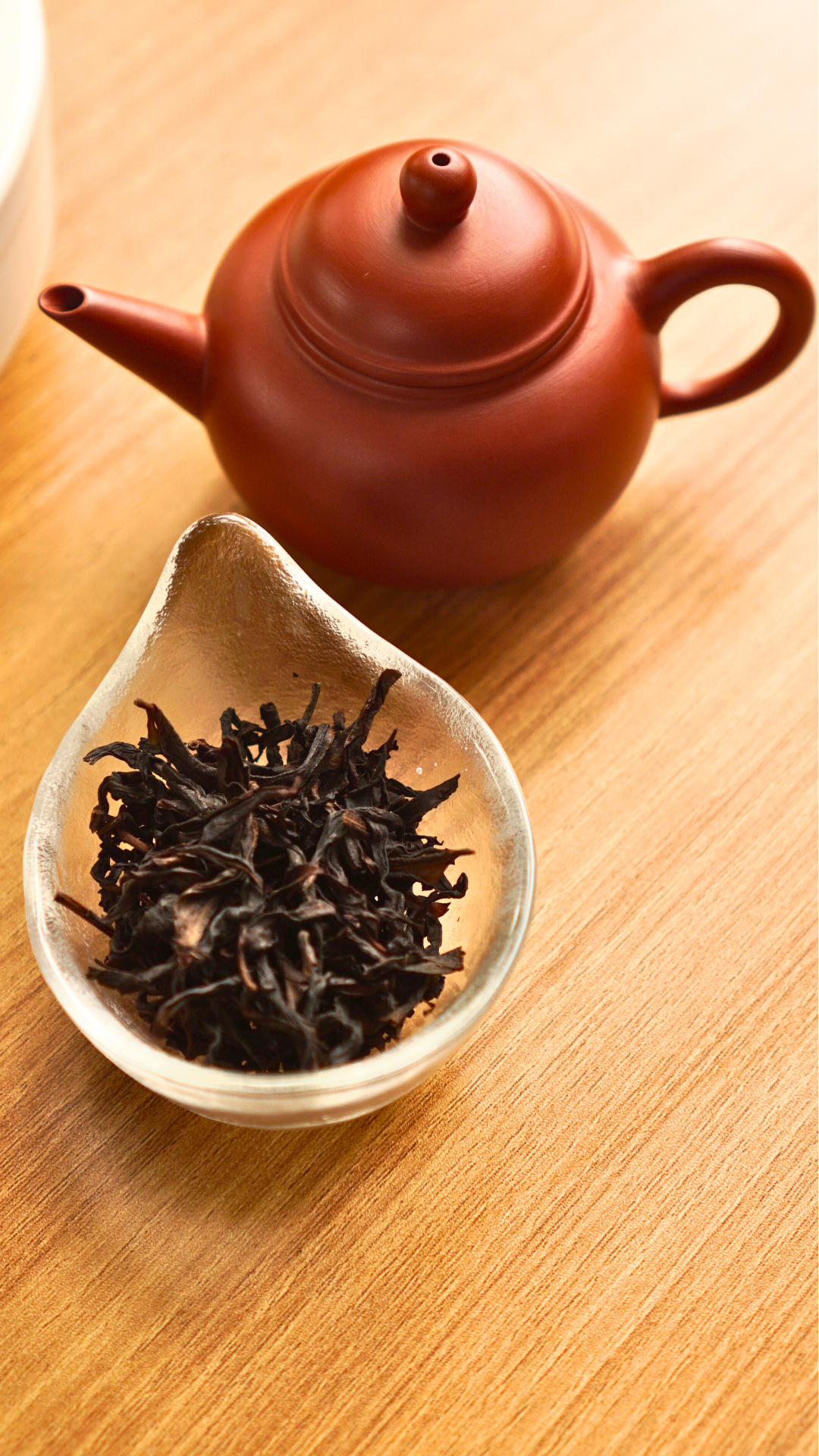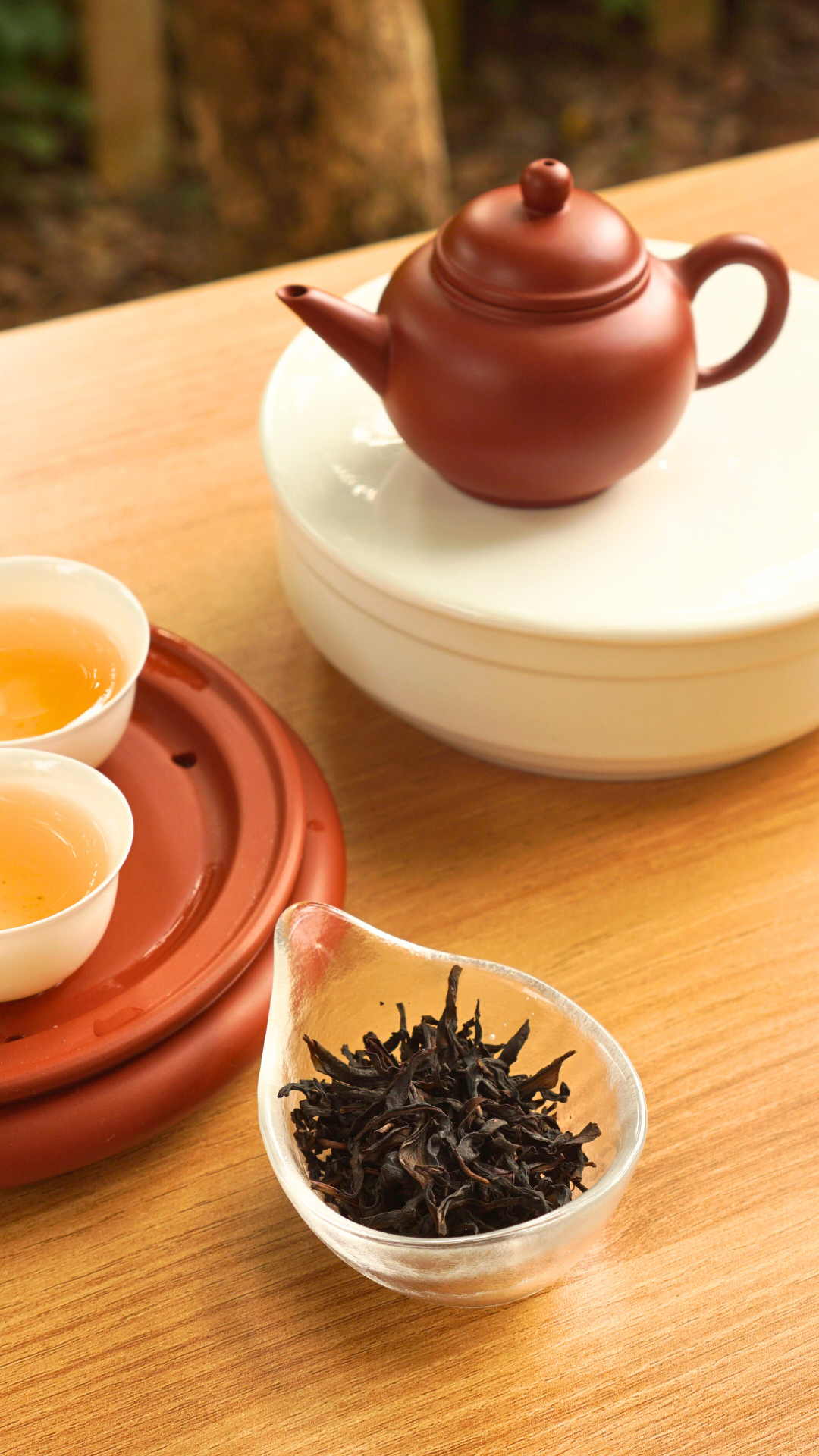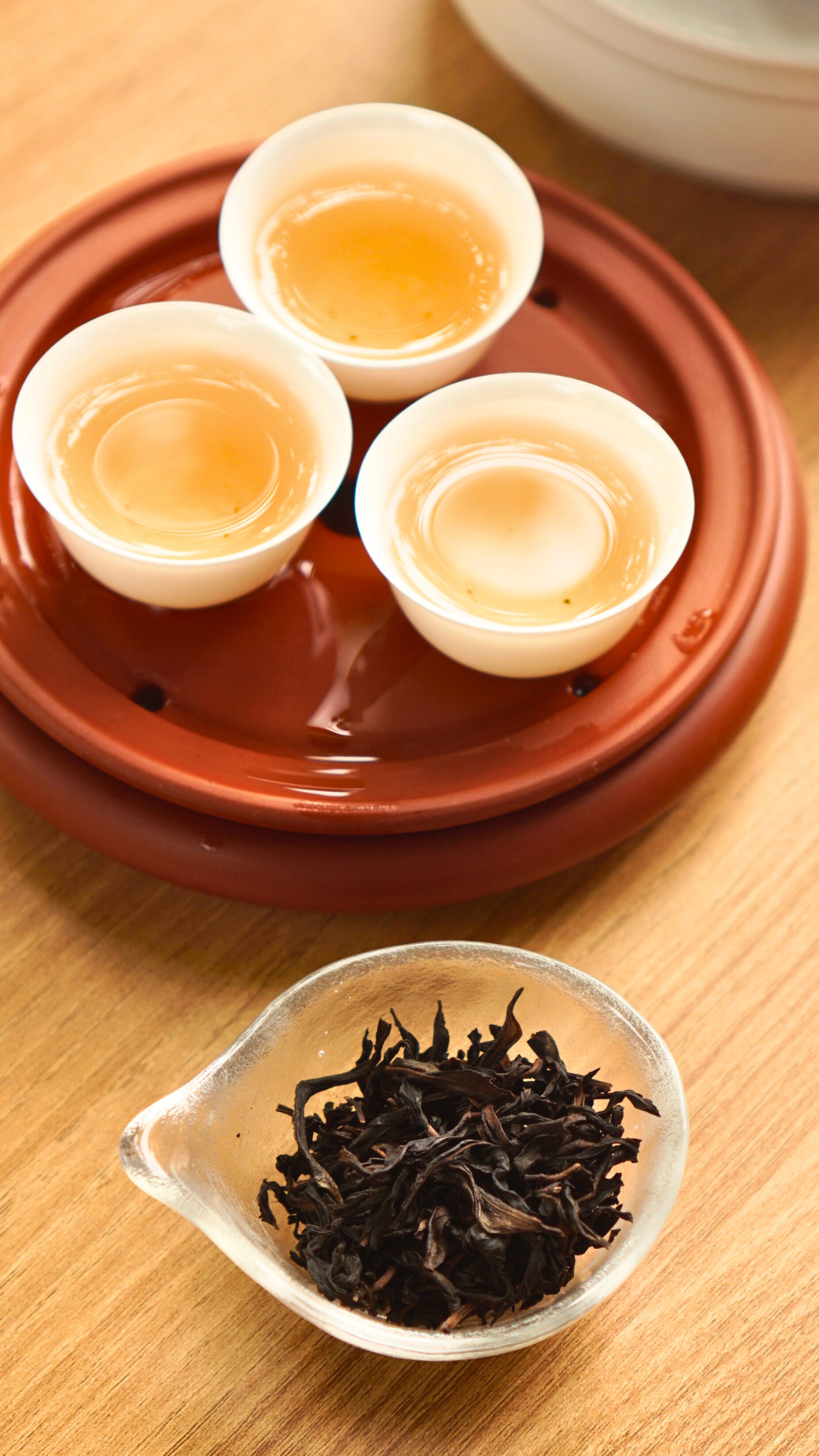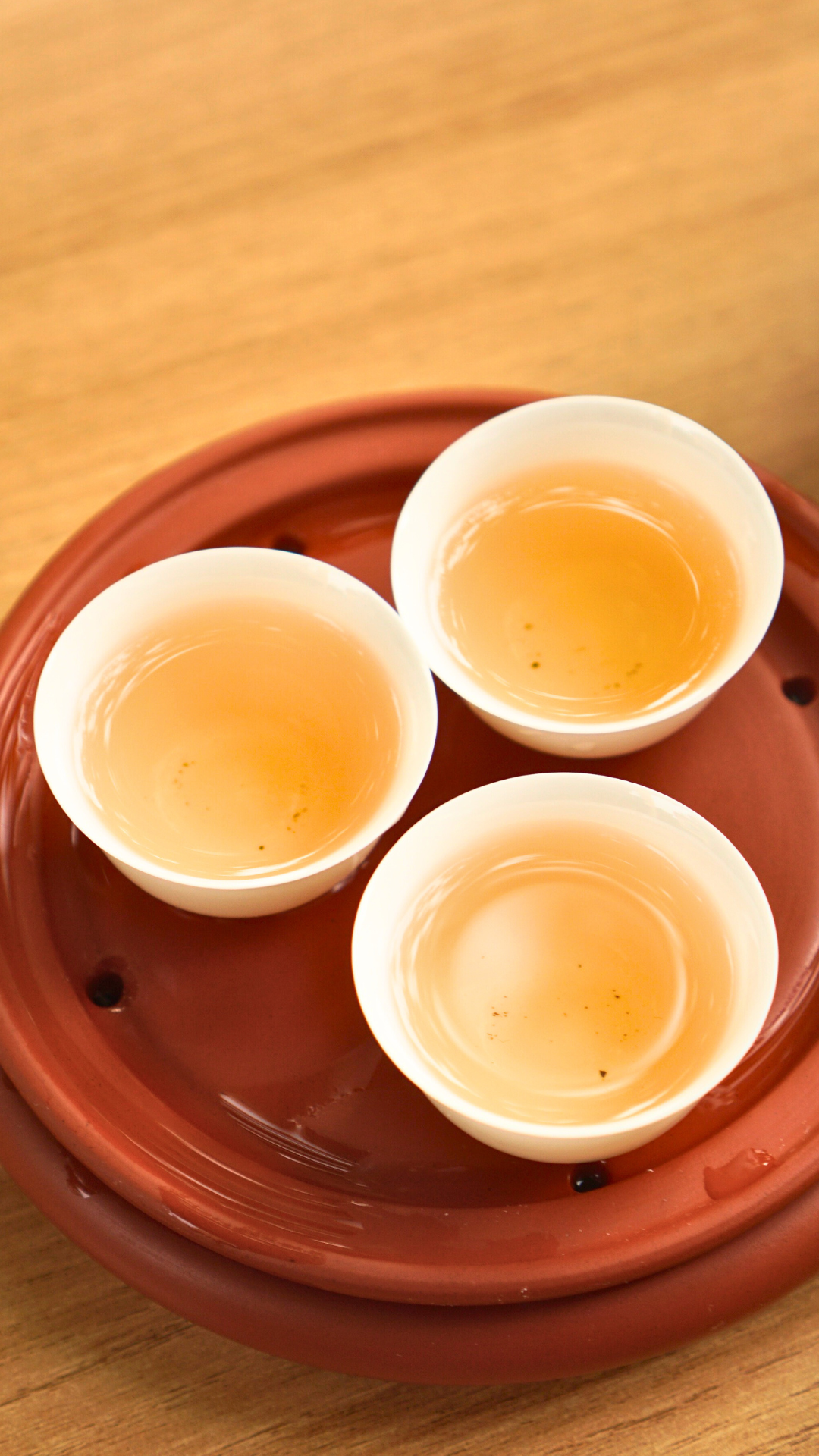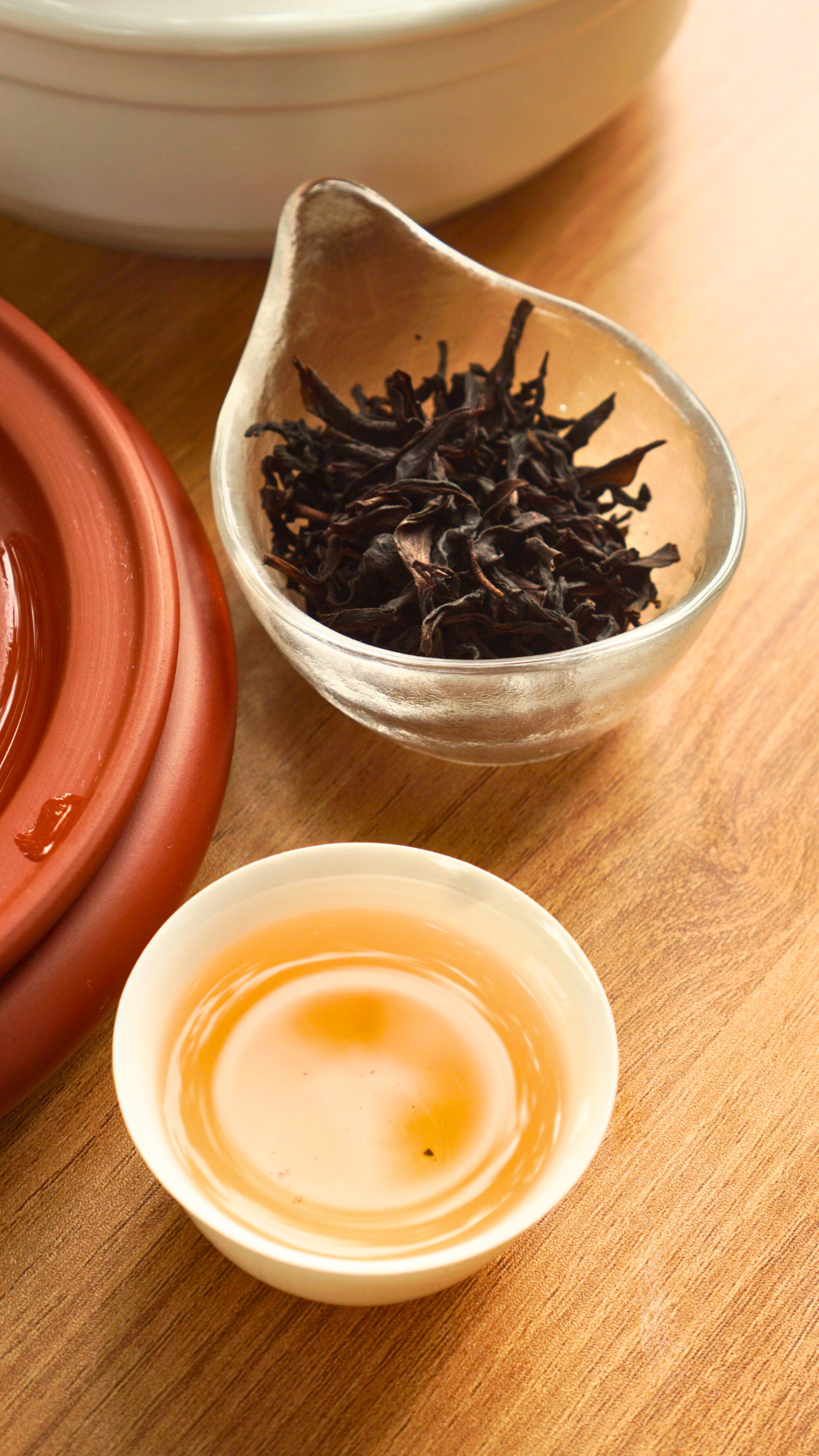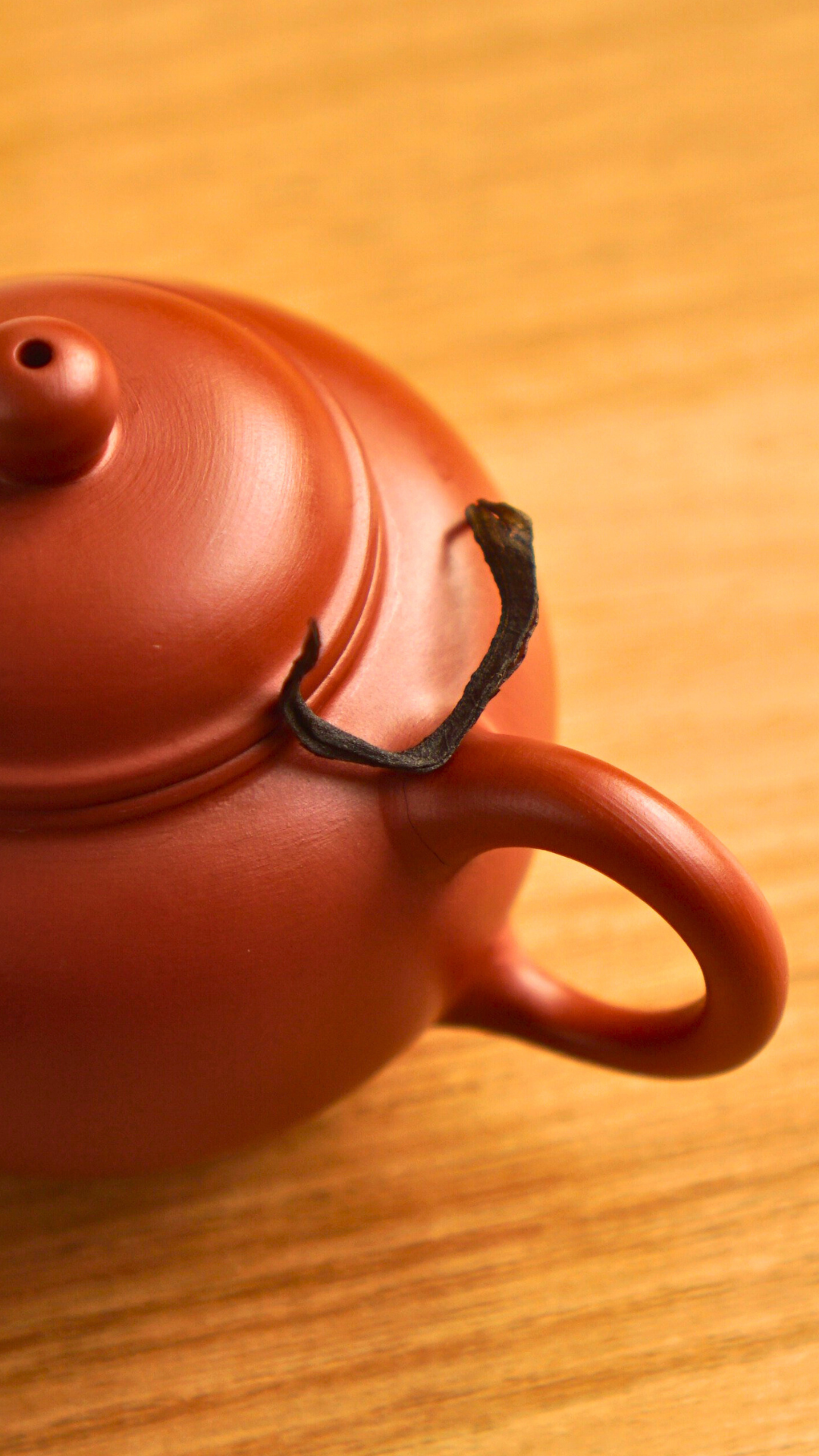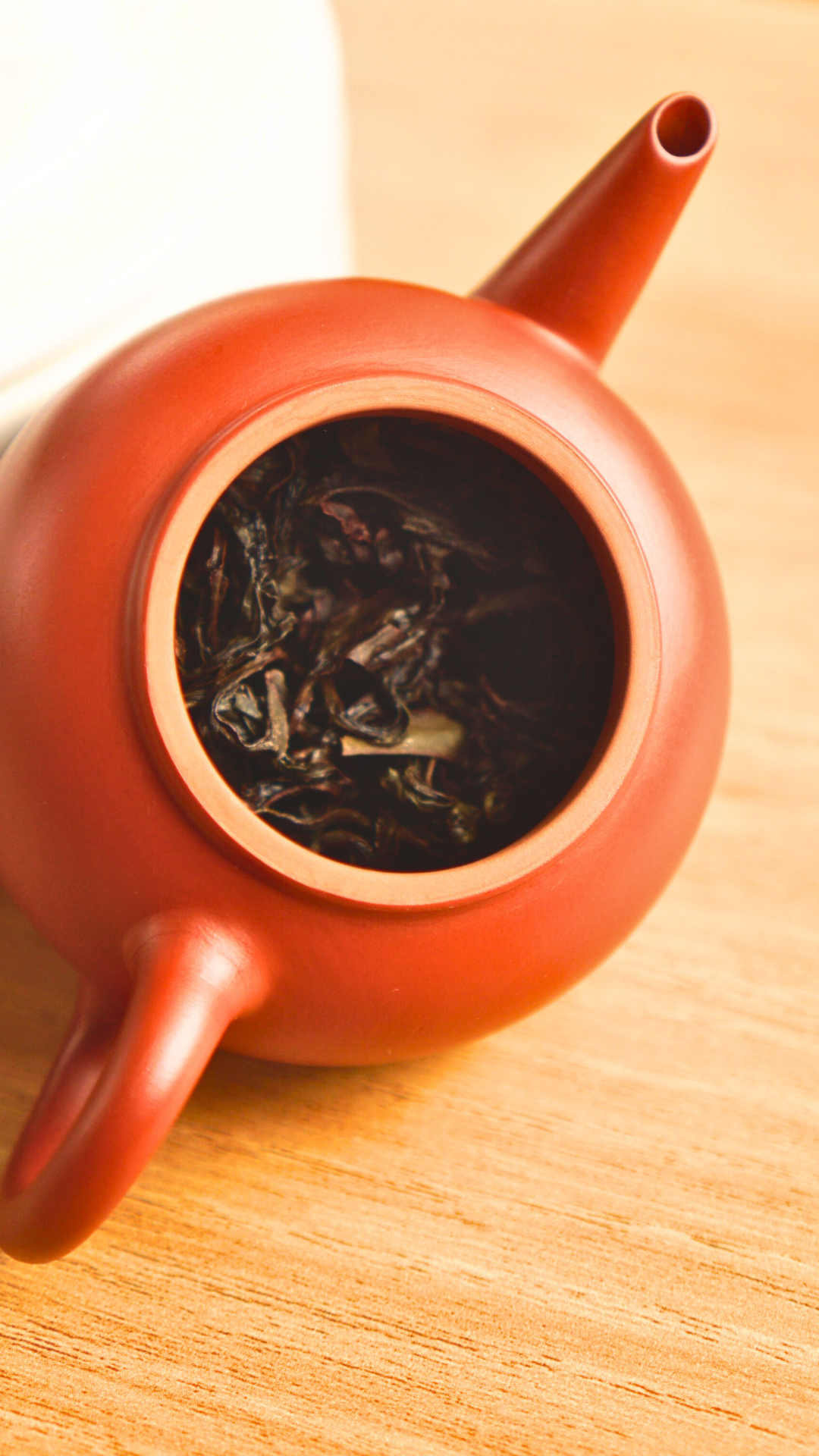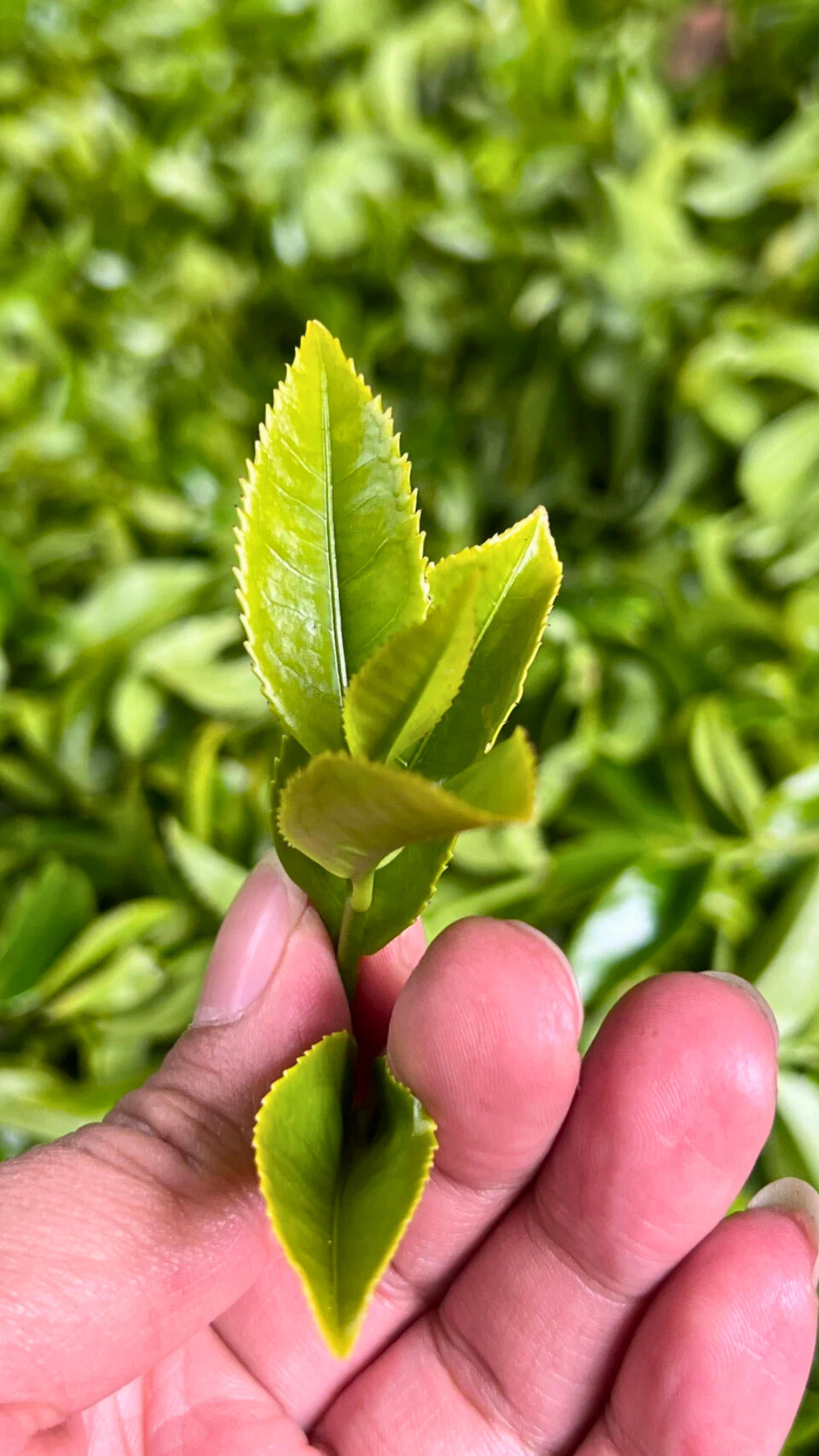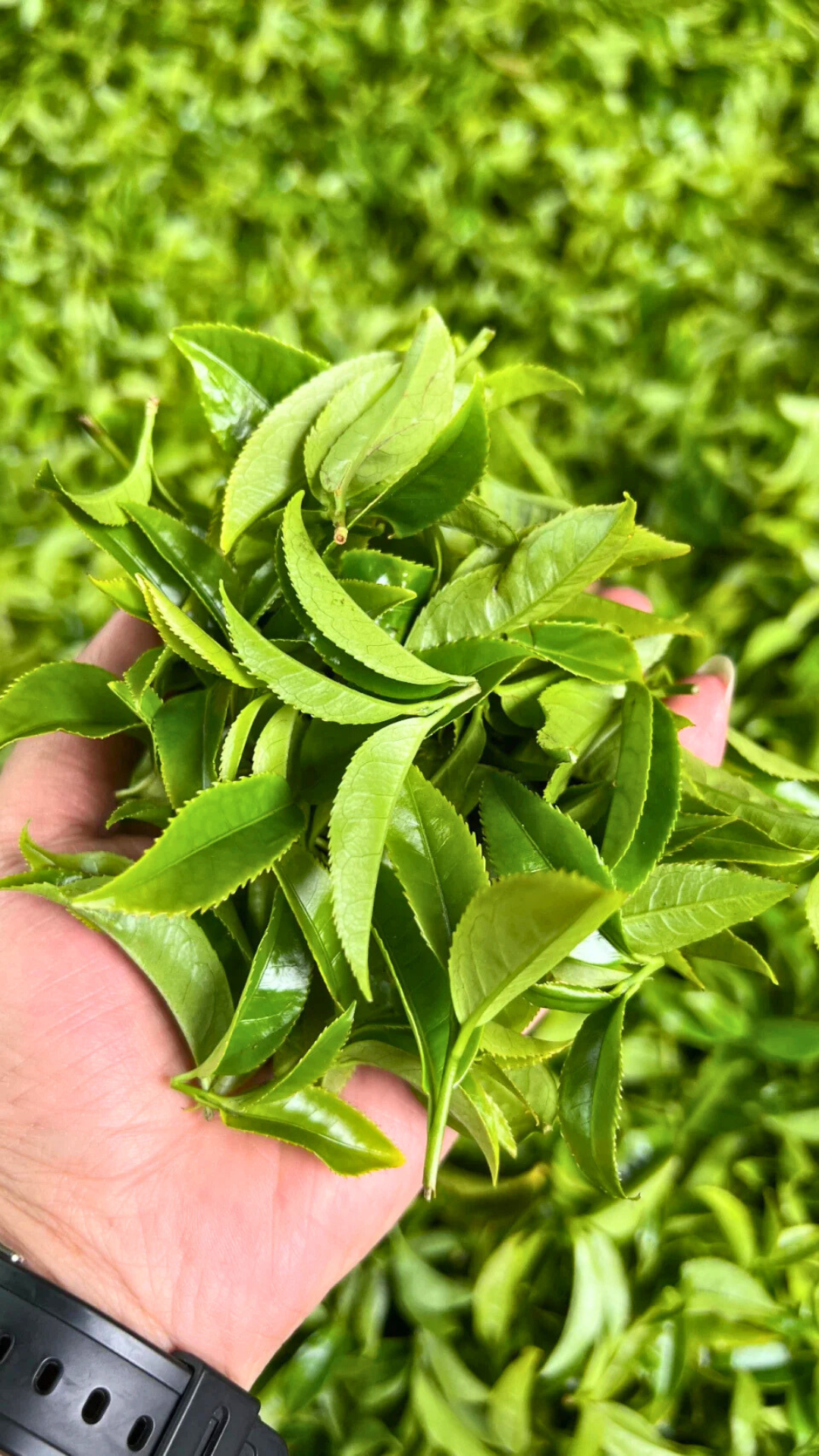Shi Gu Ping Old Bush Ju Duo Zai
Shi Gu Ping Old Bush Ju Duo Zai
石古坪老丛锯朵仔杏仁香
This Ju Duo Zai, Xing Ren Xiang Dancong ("Saw-Tooth" Almond Aroma Phoenix Single Bush) tea comes from the high-altitude tea gardens of Da Zhi Mountain(大质山) (also known as Dai Zhao Mountain 待诏山) above 1,000 meters in elevation, located in Shi Gu Ping(石古坪), Fenghuang Town(凤凰镇), Chao'an Count(潮安县).
The Shi Gu Ping area is predominantly inhabited by She ethnic(畲族) people, and the region has over 400 years of tea cultivation history. Production of oolong tea began during the Qing dynasty.
Currently, FengHuang DanCong tea on the market is primarily categorized and named by fragrance. Therefore, the variety with an almond-like aroma is called Xing Ren Xiang (Almond Aroma) Dan Cong. This particular Almond Aroma tea is also named "Ju Duo Zai" in reference to its distinctive serrated leaf edges. In the Chaoshan(潮汕) dialect, it is pronounced "ju duo zai," meaning "little saw."
Ju Duo Zai is the FengHuang DanCong tea variety with the thinnest strips. Due to the small size of its leaves, it is very challenging to harvest, and the yield of fresh leaves is minimal. In the FengHuang tea region, it is known as "shrimp before processing, toothpicks after finishing," reflecting its delicate size and shape.
This old bush Ju Duo Zai features dry leaves that are tightly twisted, slender, grayish-brown with an oily sheen, and slightly reddish veins. When closely smelled, the tea emits a honey fragrance mixed with almond aroma.
The tea soup is bright orange-yellow, sweet with a smooth texture upon entry, and exhibits a prominent almond fragrance. The mountain character is rich and layered, with a long-lasting "cong flavor" unique to old bush FengHuang Dan Cong teas.
The tea leaves after brewing are uniform, slender, and flexible.
Why Choose "High Mountain Old Bush" Tea?
The main component of tea polyphenols is catechins, which are also the primary contributors to bitterness. However, oxidized tea polyphenols can combine with caffeine to form complexes that impart a fresh and pleasant flavor. Thus, good Dan Cong teas often have high tea polyphenol content but relatively low catechin levels. This is the hallmark of teas grown in high mountain old bush environments. High mountain Dan Cong teas are characterized by high fragrance, strong durability in brewing, and intense sweetness in the aftertaste without bitterness. These characteristics are commonly described by Chaozhou tea enthusiasts as "mountain charm(山韵)."
Another feature of high mountain teas is their excellent growing environment, leading to predominantly aged tea trees. As a result, high mountain teas are often also old bush teas, which exhibit both "mountain charm" and "bush flavor." The so-called "bush flavor" is naturally tied to the age of the tea trees. The age of the tea tree, often referred to as the "bush age," indicates its lifespan. In the FengHuang tea region, tea trees aged 50 years or even up to 100 years are classified as "old bush." Tea connoisseurs often evaluate old bush teas based on their unique "bush flavor(丛味)."
What exactly is "bush flavor"? Opinions among tea connoisseurs may vary. Some say it's due to the moss growing on the old trees, imparting a subtle mossy note. Others attribute it to the woody character derived from the tea's age and woodiness of the old bush itself.
In my opinion, the root cause lies in the fact that older tea trees generally develop deeper and more extensive root systems, allowing them to access and absorb more nutrients. Moreover, as tea trees age, their trunks become thicker and can store a greater amount of nutrients, which in turn contributes to producing better-flavored tea leaves.
Storage
Storage
After Phoenix Dancong tea is produced, we judge when it can be consumed based on the degree of roasting. Lightly roasted Dancong tea can be generally consumed after being stored for 3-5 days to allow the fire to dissipate. On the contrary, heavily roasted tea requires a longer time for the fire to subside, usually at least about a week.
Classification by Degree of Roasting:
Light-Fragrance Type
Refers generally to lightly roasted tea. The aroma is typically excellent within three months, and if stored properly, it remains outstanding for 2-3 years. Examples include Xuepian tea, autumn tea, and lightly roasted spring teas (commonly featuring varieties famous for their strong fragrance like Ya Shi Xiang, Da Wu Ye, Gong Xiang, Ye Lai Xiang, etc.).
Mellow-Fragrance Type
Refers generally to tea leaves roasted with medium heat. This type of tea typically exhibits both a rich aroma and a fresh fragrance, with a pleasant taste that is much loved by tea enthusiasts. With the increased degree of roasting, the aroma and flavor of the tea are brought to perfection, with the best drinking period being within three years. When properly sealed and stored, mellow-fragrance Dancong tea becomes smoother over two years, and its aroma deepens into the tea liquor.
Strong-Fragrance Type
Refers generally to tea leaves roasted with high heat. This type of tea requires a relatively long time for the fire flavor to dissipate, but the tea is suitable for longer storage. The best drinking period is generally between 3-5 years. The main varieties of this roasting style include Shuixian, Baxian, Mi Lan Xiang, Da Wu Ye, and Ao Fu Hou, among others.
Most Dancong teas share a common characteristic: they develop a richer taste over time due to post-fermentation. However, it’s somewhat oversimplified to claim that Dancong tea can be stored indefinitely. This is because after a certain storage period, the tea will begin to exhibit aged flavors. Typically, aged flavors become noticeable after more than five years, which is why we often recommend a storage duration of 3-5 years.
The moisture content of Phoenix Dancong tea after refinement is 3.5%~4.5%, not exceeding 5%, and it does not require refrigeration for storage. When storing at home, it is important to consider four factors: moisture-proofing, light-proofing, avoiding breakage, and odor prevention.
1. Using Sealable Purple Clay or Ceramic Containers
These types of containers, especially purple clay tea canisters, are the most suitable for storing loose Pu'er tea. They can block light, prevent moisture, and the unique breathability of purple clay vessels can assist in the transformation and aging of raw Pu'er tea.
First, clean the purple clay container thoroughly, and once it is dry, you can store loose Pu'er tea in it.
Note that while purple clay containers are excellent at blocking light and preventing moisture, you should still avoid direct sunlight to prevent the container from overheating. Also, due to the micro-porous structure of purple clay, it is essential to prevent the storage environment from containing odors.
2. Using Cardboard Boxes for Storage
Although purple clay containers are ideal for storing loose Pu'er tea, they can be expensive. If you need to store a large amount of tea, cardboard boxes are a viable alternative.
Choose boxes with good thickness and strength. First, place the loose Pu'er tea into clean, food-grade plastic bags or aluminum foil bags, and then place these into the cardboard box for storage.
*Storage Tips:*
Do not place the cardboard box directly on the floor, as it can absorb ground moisture. Ideally, place it on a shelf or inside a cabinet.
Avoid direct sunlight.
Avoid placing the cardboard box in environments with mixed odors, such as kitchens or dining areas.
- Loose Oolong Tea
- 500g/pouch
- Free Shipping
Couldn't load pickup availability
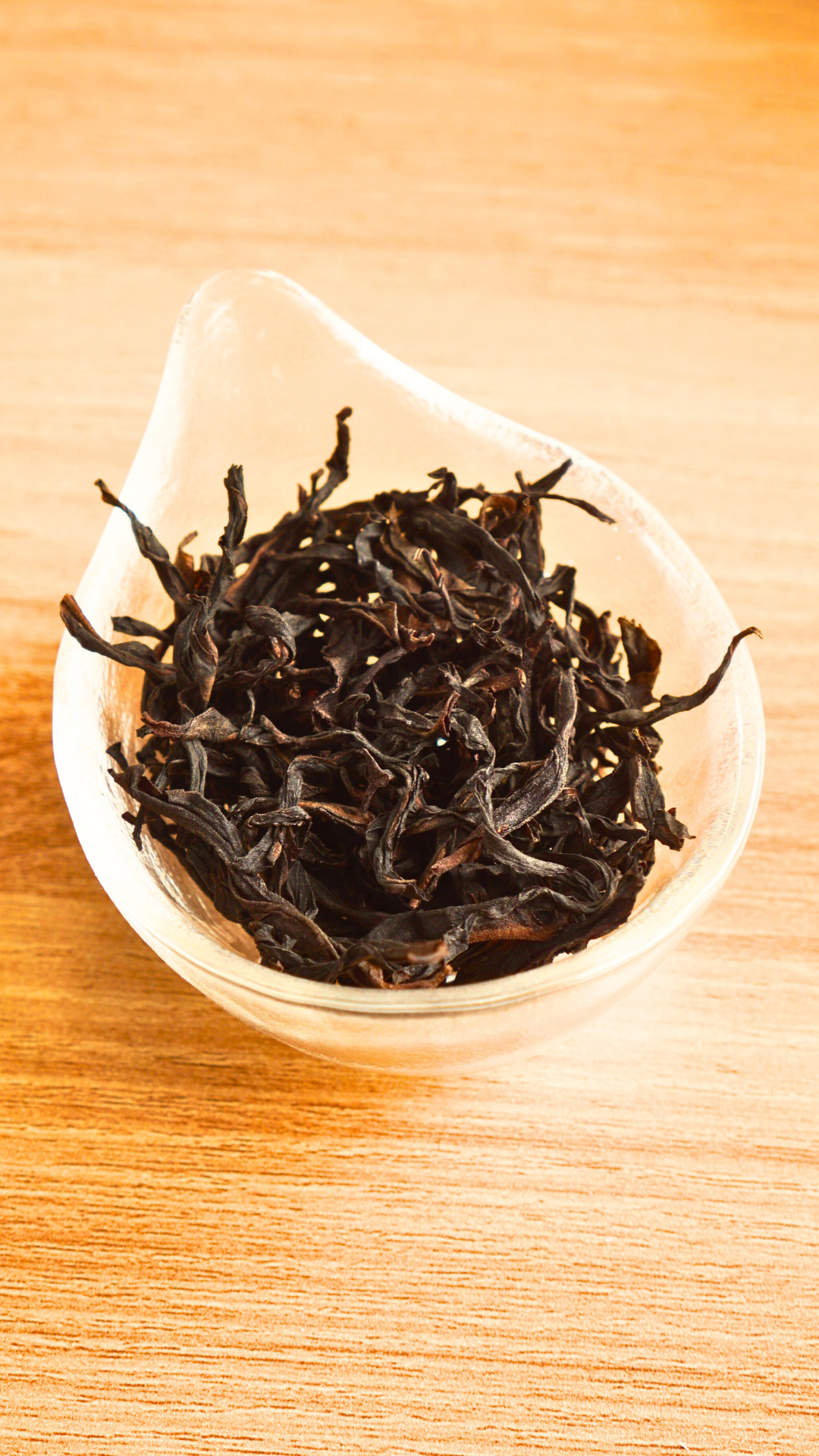
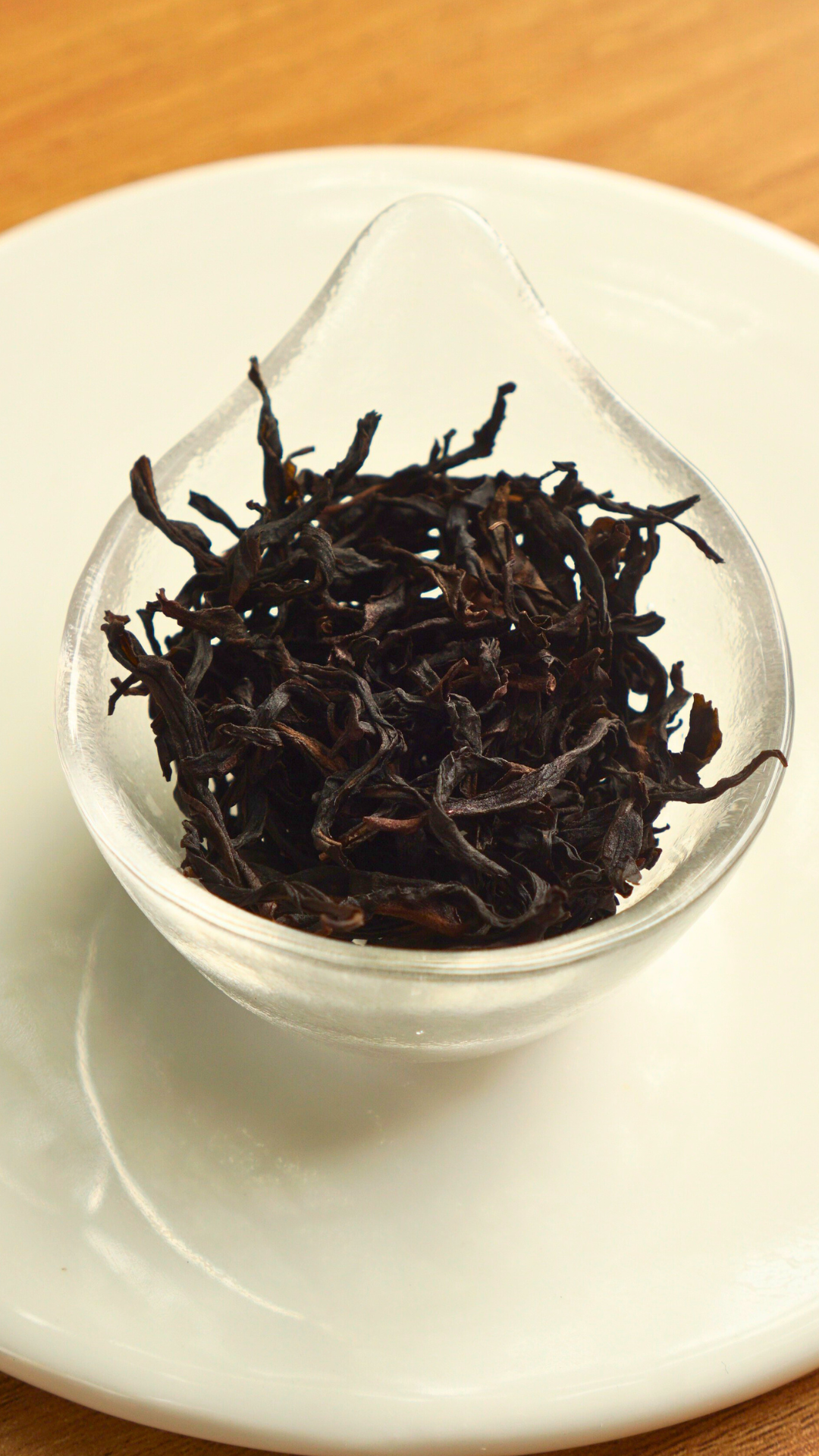
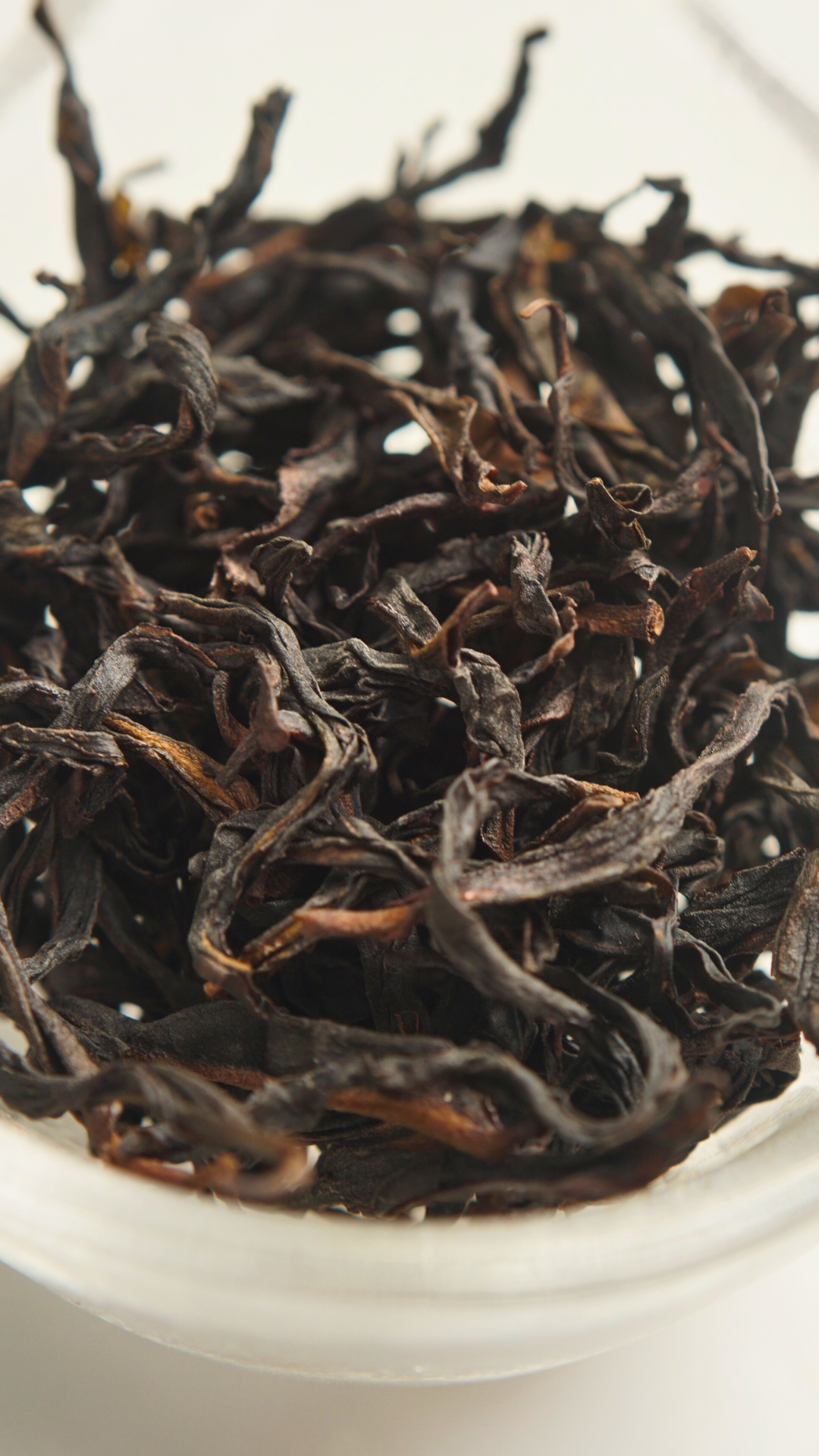
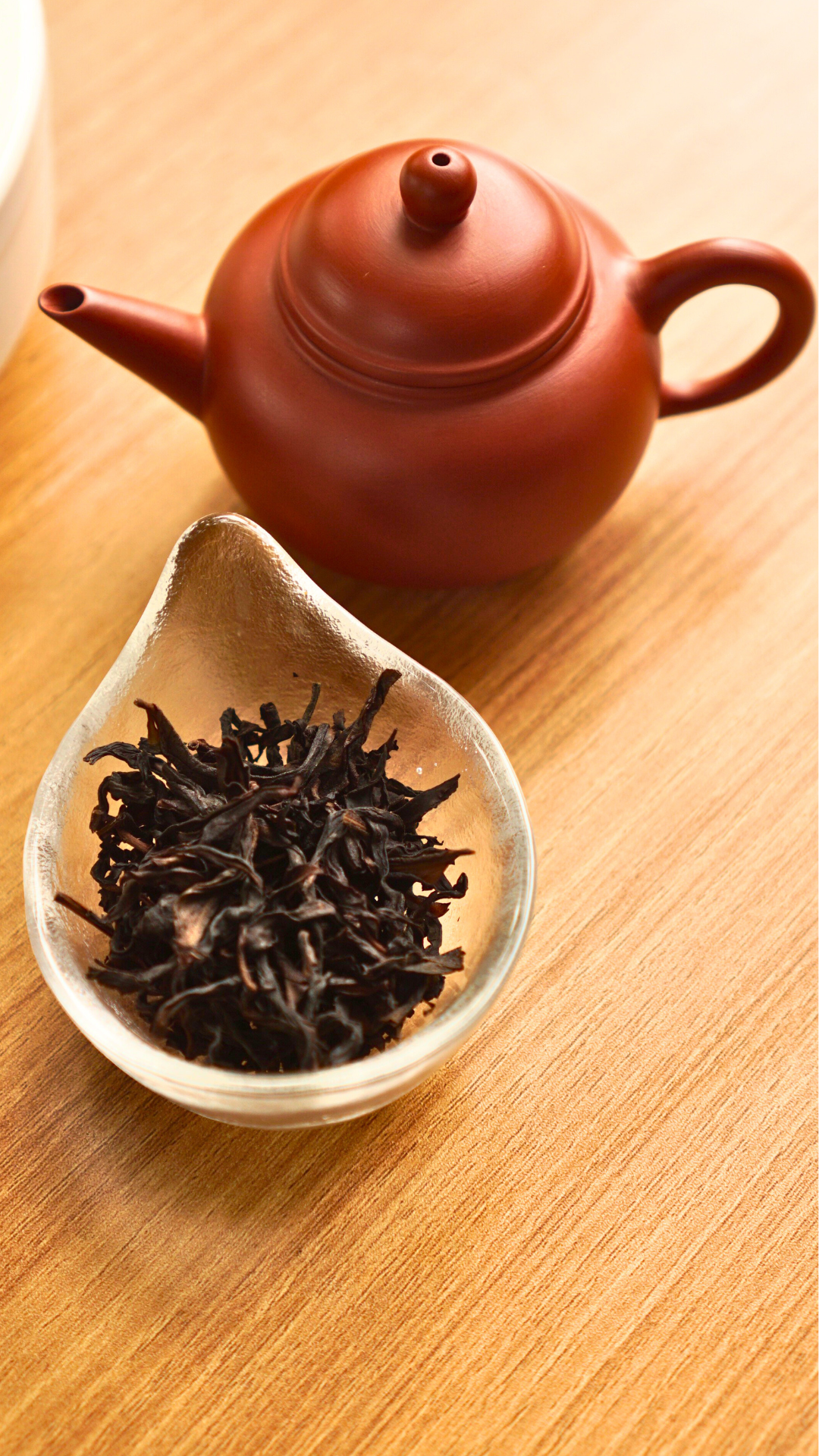
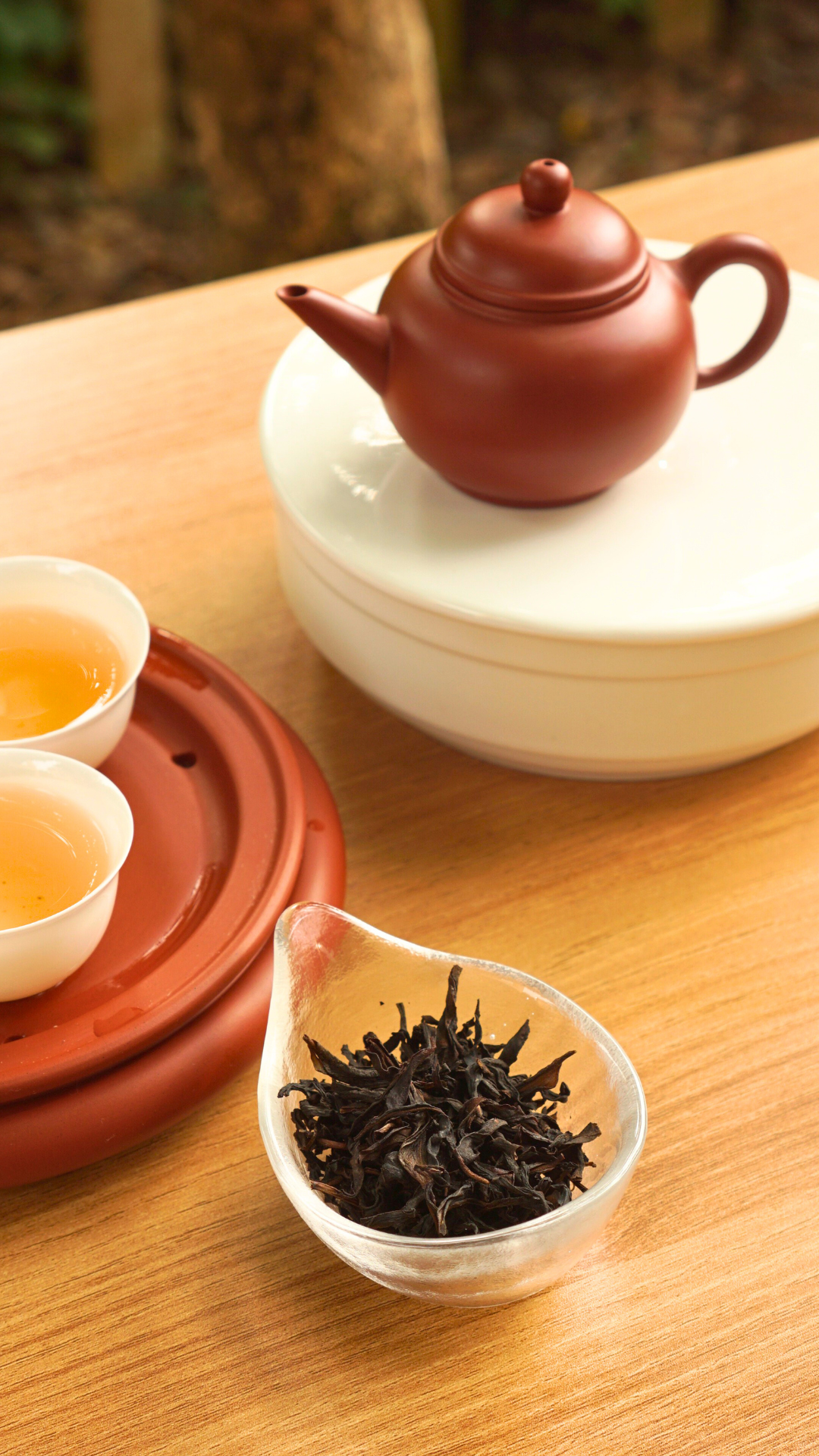
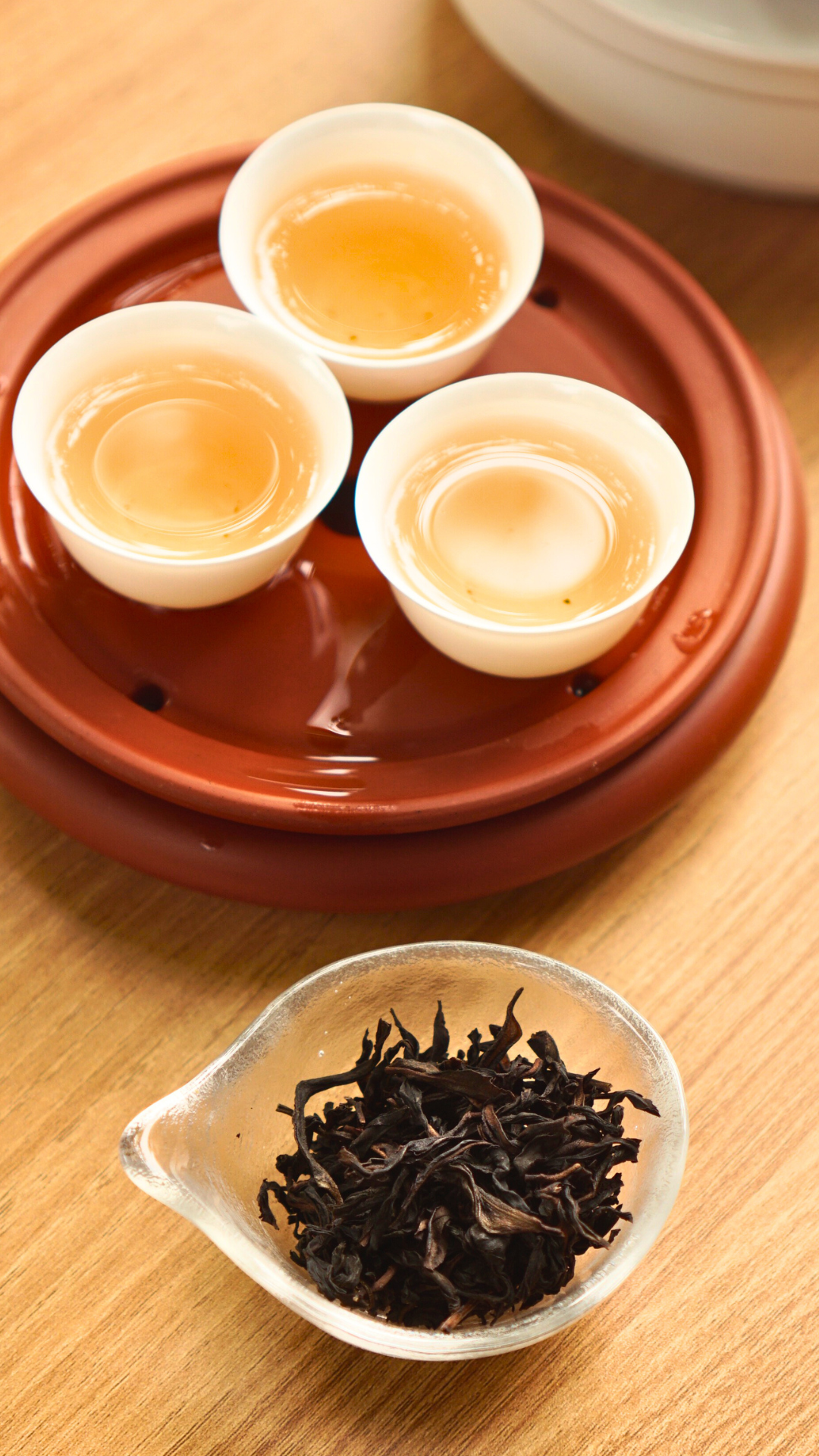
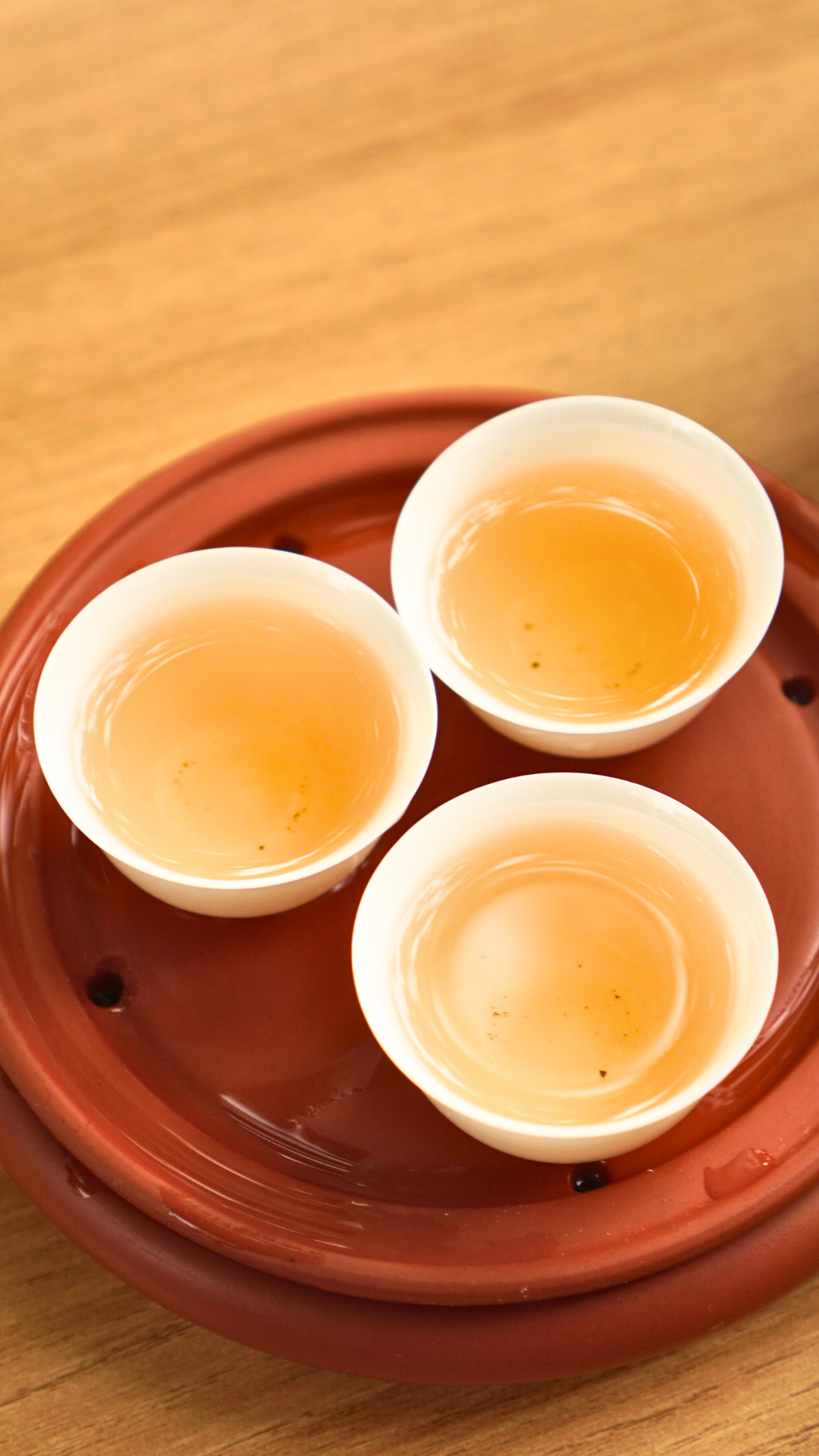
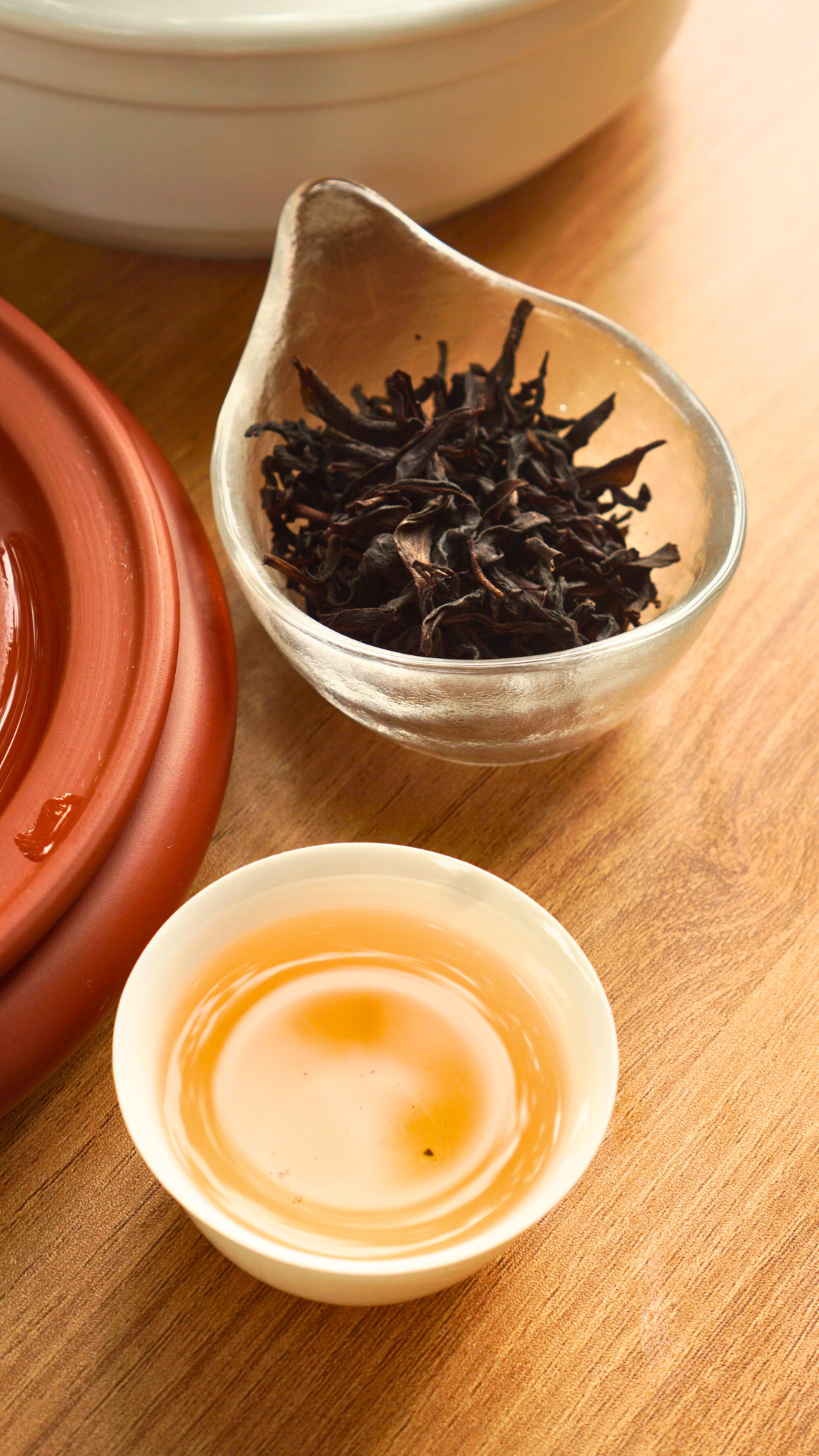
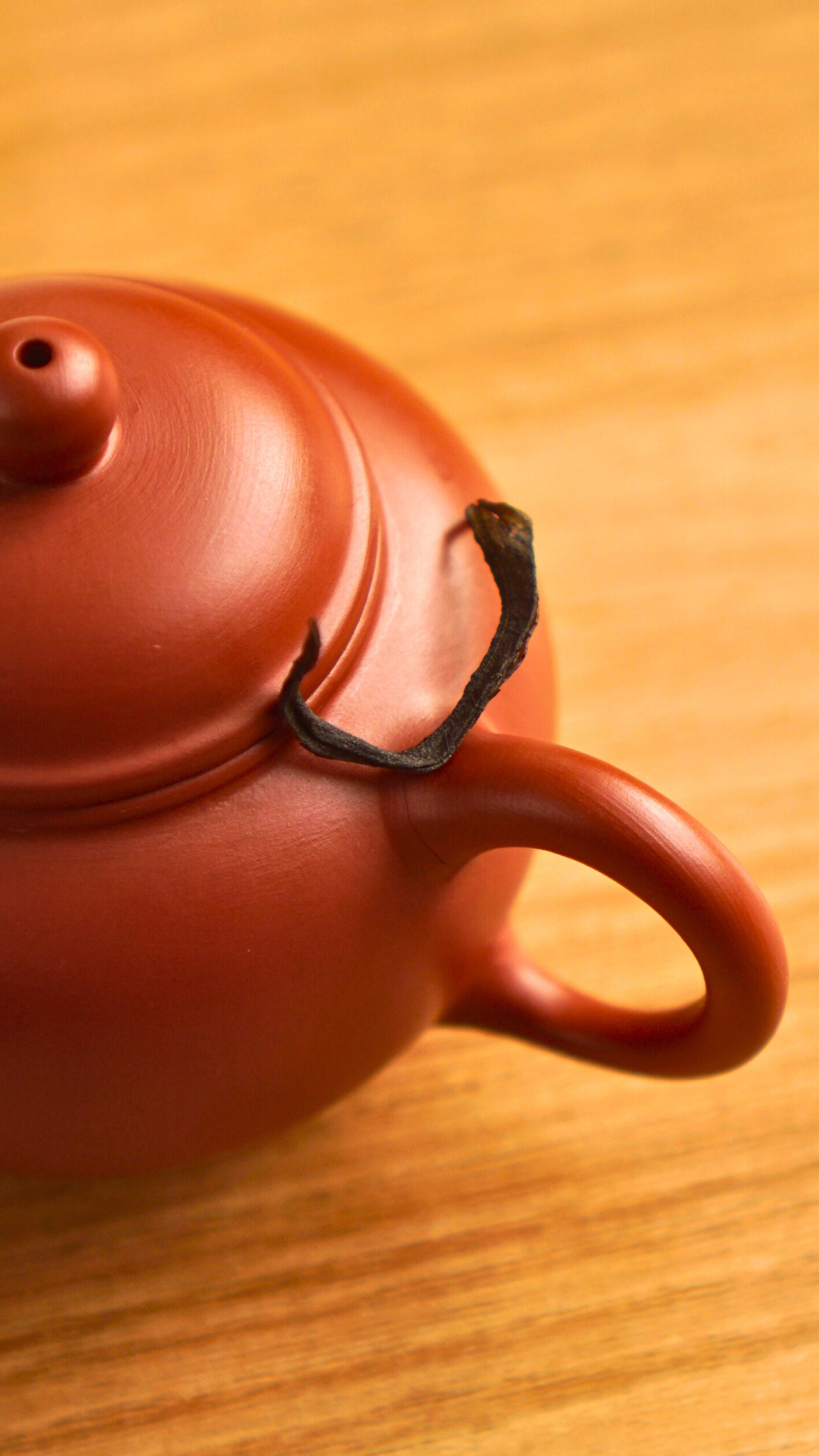
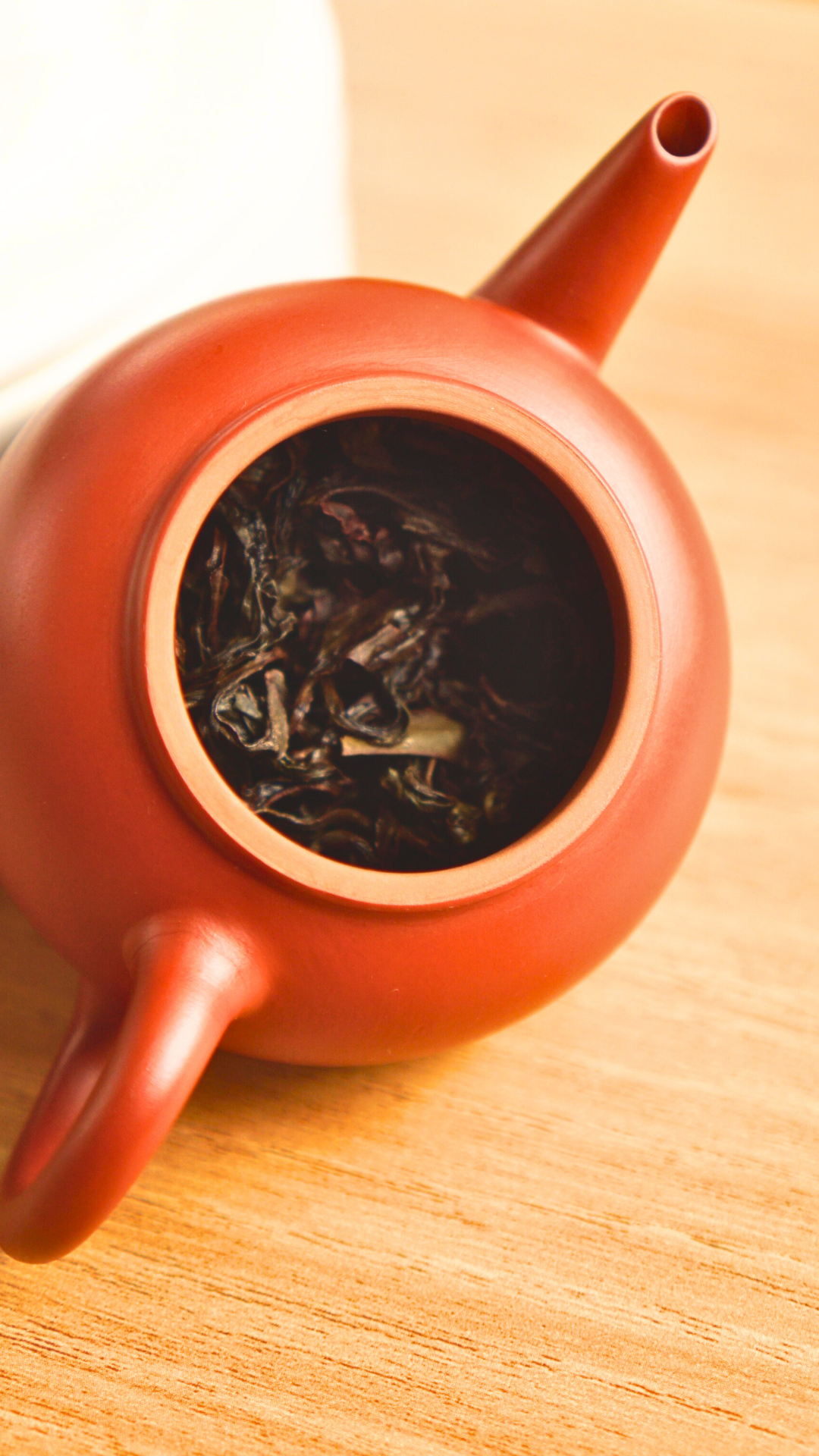
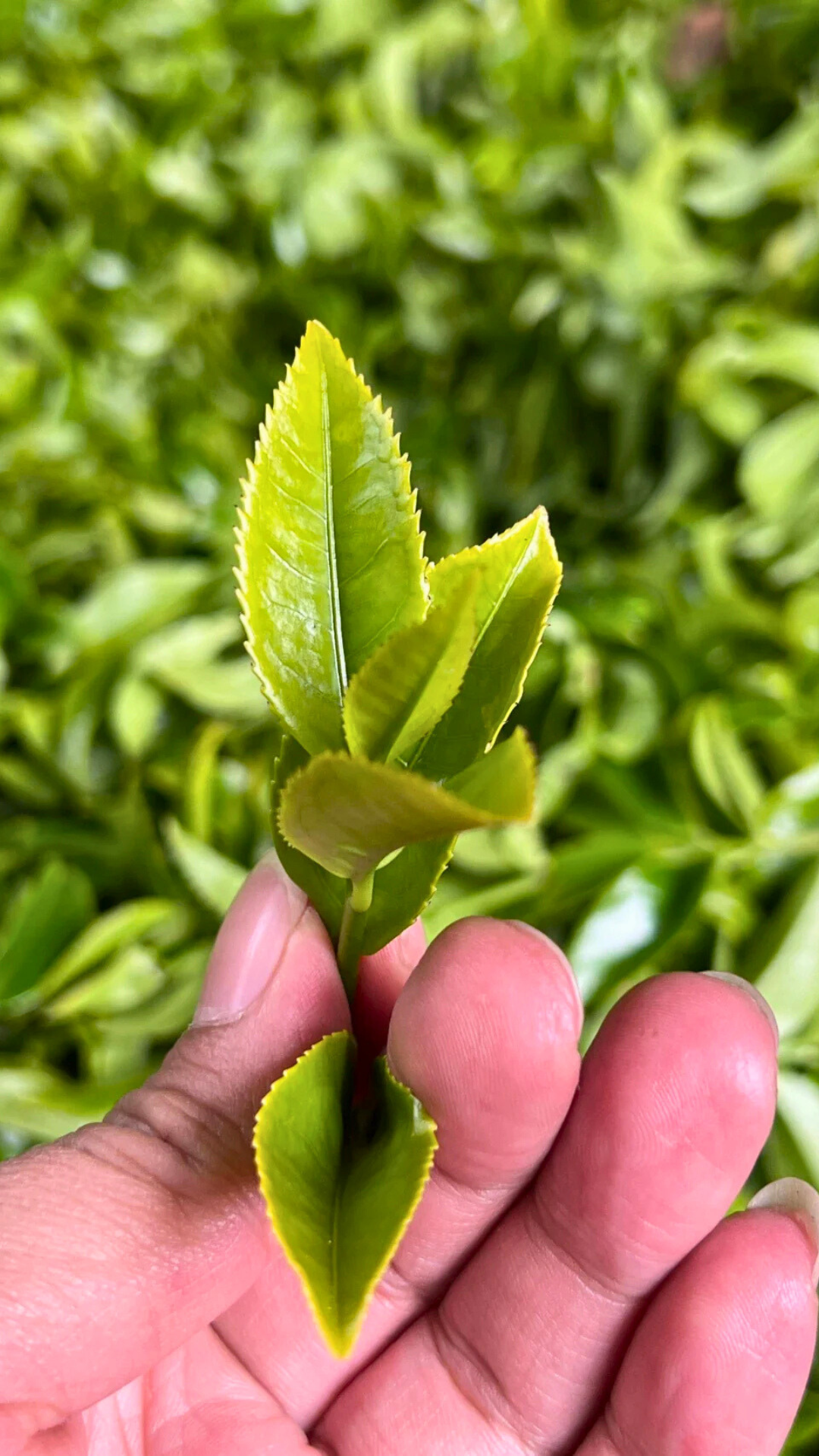
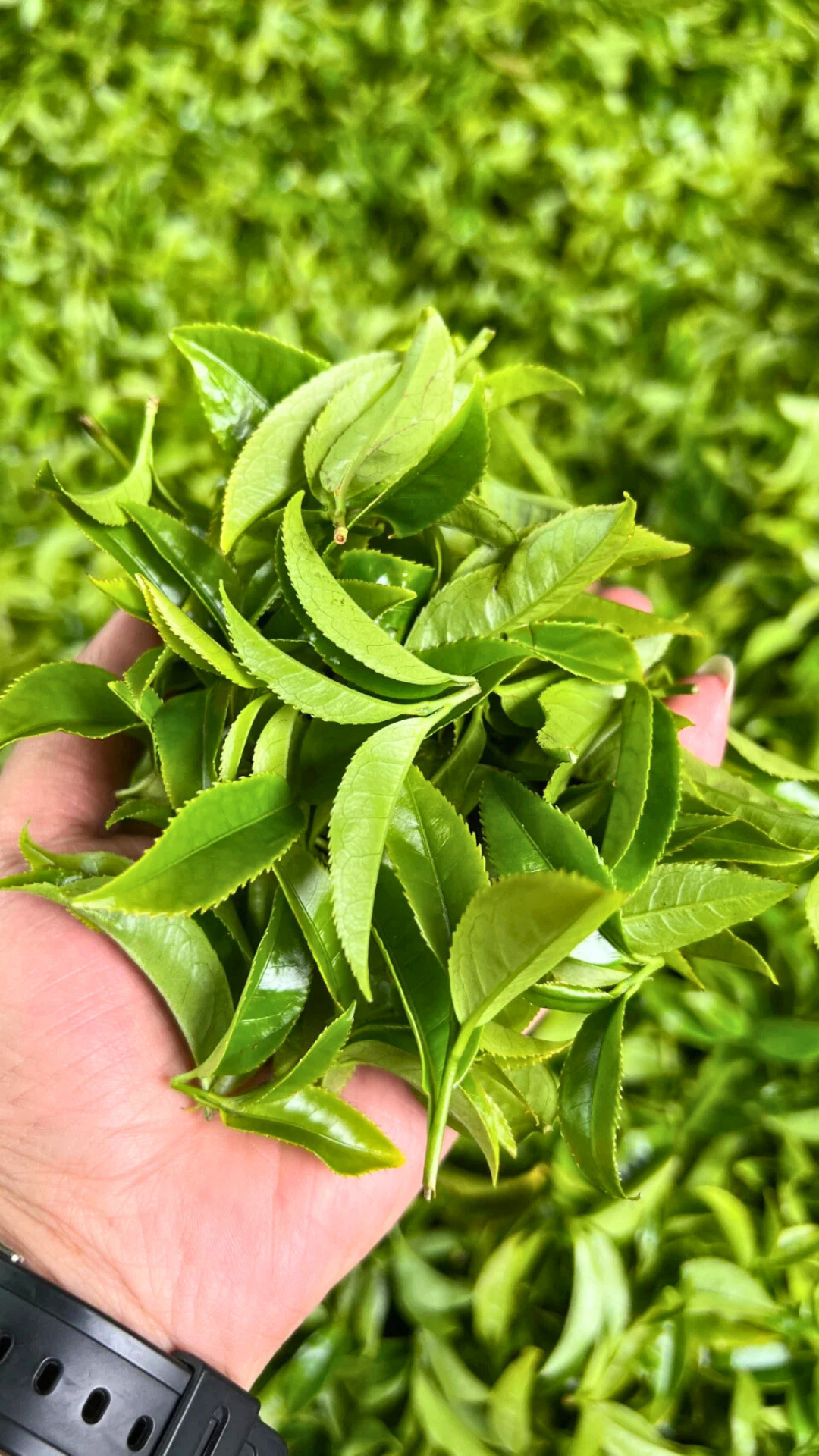
A very special fenghuang Dancon tea, with very fine and curly leaves, a sweet fragrance, and a slight hint of smokiness. The tea liquor is very refreshing, with a wildflower aroma. It's very good, and I like it a lot.
Very interesting. This is my first time trying this category of dancong tea. The leaves are smaller than other varieties, making it very suitable for brewing in a small zhu clay teapot. The aroma is also very unique—different from other dancong teas. This tea belongs to a cooler type of aroma, which becomes more pronounced in the infused leaves. Very special.

